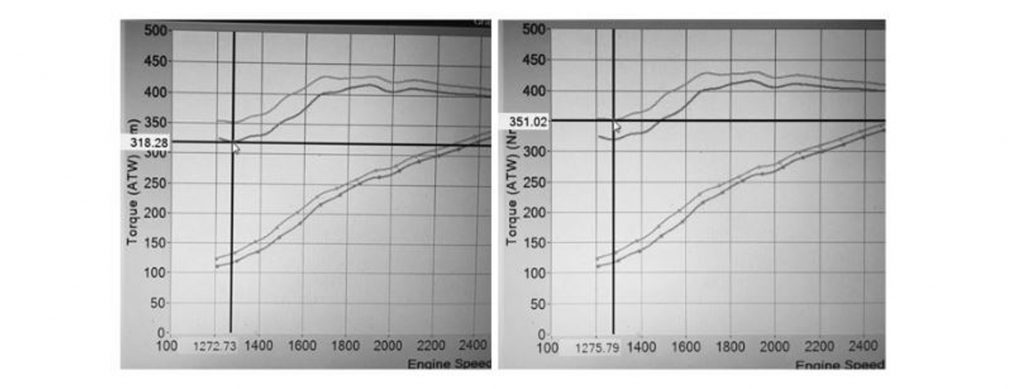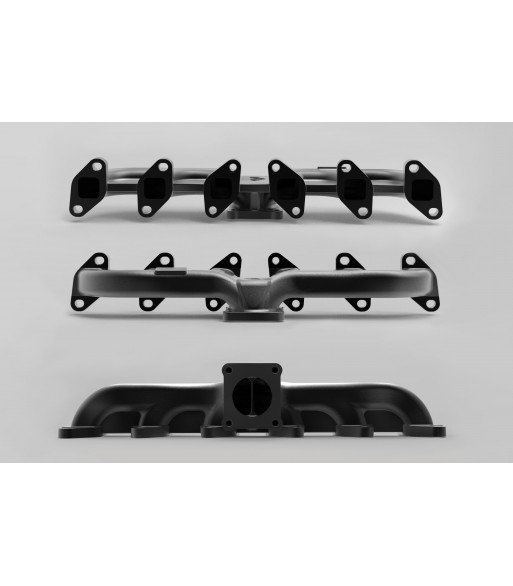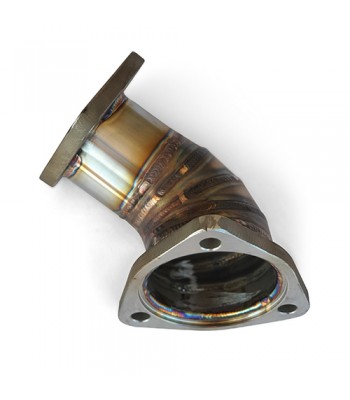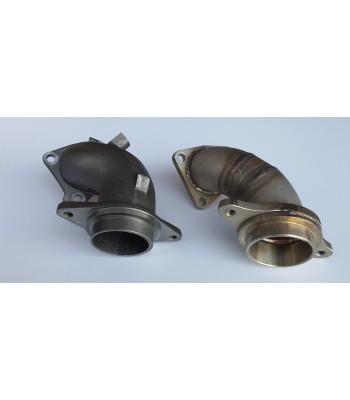Throughout the design and development of the Eclipse Turbo Systems (Engine Specific) turbocharger range, extensive testing has been carried out on the Landcruiser 4.2 exhaust manifolds. Flow bench testing combined with real world tests confirm areas of the factory exhaust manifold system in need of improvement of both design and execution.
These results reveal a lack of flow and interrupted pulse energy leading to high cylinder thermal loads due the lack of cylinder scavenging. This is especially import to pre-combustion 1hz engines, but relevant to all Landcruiser 4.2 engine’s. A high loss of thermal energy was also noted. The development and introduction of the Eclipse Split pulse manifold corrects the directional flow with as little impedance and pressure changes as possible creating a stronger pulse and gas velocity, while separating the individual pulse pressures created from the engines firing order.
Understanding Pulse Energy:
Pressure waves travel roughly 3 times faster than exhaust gas flow at low engine RPM. Pressure pulses are created from the exhaust valve opening with the duration and pressure of the pulse being dictated by the engines RPM and the exhaust stroke of the piston. Every pressure pulse, is followed shortly behind by a very important vacuum pulse! This vacuum pulse is what helps to accelerate the exhaust gas flow allowing more gas to leave the cylinder faster, thus scavenging the cylinder of hot exhaust gasses (Hot gasses are what drives the turbine on Turbo Diesels). Harnessing the pulse energy just allows more of these gasses that would otherwise remain in the cylinder to be utilized by the turbine, and why the biggest gains of pulse energy are made in the lower RPM.

Single Cylinder Cycle Test
Here we look at a all too common issue with open log manifold designs. The firing order on a Landcruiser 4.2 is (1-4-2-6-3-5) meaning the opening of the exhaust valve alternates between the front 3 cylinders and the rear 3 cylinders of the block (Front bank, Rear bank). With the use of an open log manifold the pressure pulses from the front 3 cylinder can interfere with the valve opening pulse of the rear 3 cylinders – diluting and weakening the pulse energy of all 6 cylinders with the gas flow also being disrupted and reduced. The Split Pulse Manifold has been designed and tested for maximum flow, with divided runners of the firing order (front bank to rear bank) running all the way down to the turbochargers volute entry. The pressure pulse can still be weakened at this point by the vacuum and pressure pulse of each bank, but even this simple design modification results in 10% more turbine drive and reduction in cylinder thermal load due to scavenging.

Results from a Toyota CT26 turbocharger and Factory Toyota exhaust manifold – VS – the same Toyota CT26 turbocharger with Eclipse Split Pulse Manifold, with no other changes.
A gain of 30nm (10% increase) at the wheels is achieved, at as low as 1200rpm.
Material
The new Eclipse Turbo Systems Split Pulse Manifolds are produced from a very high grade Ductile Cast Iron resulting in a very smooth finish, that also exceeds turbo diesel exhaust manifold thermal requirements.
Finish
The manifolds are high temperature ceramic coated (Matt Black) for added thermal energy control, lower engine bay temps and long lasting visual aesthetics.
Fitment
These manifolds are a Multi fit design. They utilise the square shape of the 1HDFT and 1HDFTE manifold and can be used on any of the Landcruiser 4.2 engine models with either gasket.







